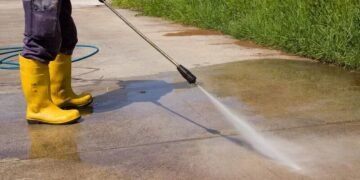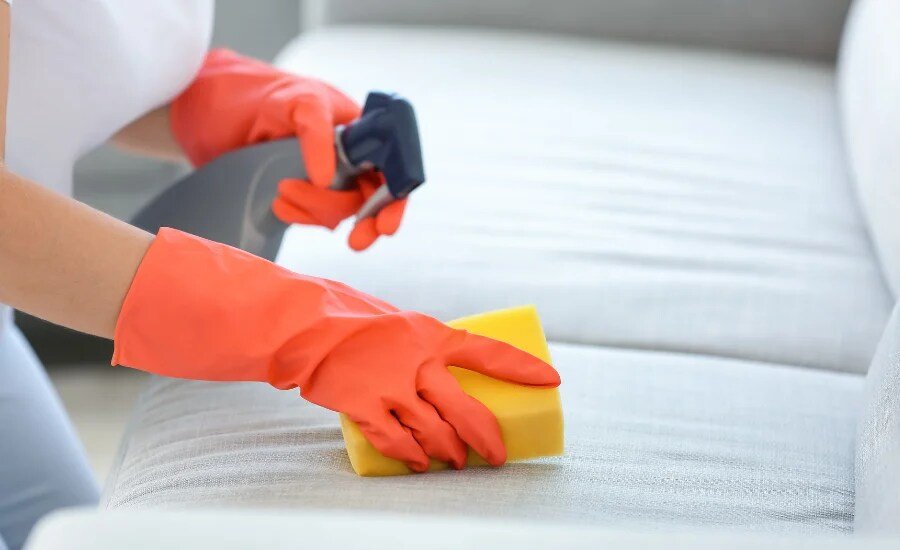When we look at a building, its exterior is often the first thing that catches our eye. This visual impact underscores the significance of facade cleaning, a crucial aspect of building maintenance that is often overlooked. The facade of a building is more than just a superficial front; it is a reflection of its identity and value. In this blog, we’ll delve into the intricacies of facade cleaning, shedding light on what it entails and why it plays a pivotal role in the upkeep of both residential and commercial properties. From the aesthetic appeal to the longevity of your property, facade cleaning is an investment in your building’s health and beauty. Join us as we explore the importance of this essential practice and provide practical insights on how to maintain the charm and integrity of your property’s exterior.
What is Facade Cleaning?
Facade cleaning involves the process of removing dirt, grime, pollutants, and other unwanted elements from the exterior surfaces of buildings. This practice is not just about splashing water on the walls; it is a detailed and often intricate procedure that varies depending on the building materials involved. For instance, cleaning a glass-clad skyscraper in a bustling city center requires a different approach than sprucing up a quaint brick cottage in the suburbs.
At its core, facade cleaning is about restoring and preserving the original appearance of a building. Techniques range from gentle hand washing for delicate surfaces to more robust methods like pressure washing or sandblasting for tougher materials. Additionally, professional facade cleaners often employ chemical treatments to address specific challenges such as mold growth or efflorescence, ensuring the building not only looks clean but is also protected from further damage.
This task is not just about aesthetics; it plays a critical role in building maintenance. Regular cleaning prevents the build-up of harmful substances that can cause long-term damage to the building materials. Whether it’s a historic structure with ornate details or a modern building with a minimalist design, facade cleaning helps maintain the building’s integrity and extends its lifespan, ensuring it continues to stand tall and proud for years to come.
The Importance of Facade Cleaning
Primarily, it maintains the aesthetic appeal of a building, ensuring it looks inviting and well-cared for. But the significance of facade cleaning extends far beyond mere appearances. Regular cleaning of a building’s exterior is a key factor in preserving its structural integrity and longevity. Over time, pollutants, dust, and organic growth like algae or moss can adhere to the surface of buildings. These elements, if left unchecked, not only tarnish the building’s appearance but can also cause physical damage, leading to costly repairs in the future.
Moreover, a clean facade is essential for sustaining the property’s value. In real estate markets, first impressions are crucial, and a well-maintained exterior can significantly impact a property’s appeal to potential buyers or tenants. For commercial properties, a clean and attractive facade can enhance brand image and customer perception, contributing to the success of the businesses within.
The importance of facade cleaning also extends to environmental health. Buildings that are regularly cleaned help to reduce the level of urban pollutants, contributing to a cleaner and healthier environment. Additionally, removing harmful substances like mold and mildew from building exteriors is vital for the well-being of the occupants and the surrounding community.
In summary, facade cleaning is an essential practice for anyone looking to preserve the beauty, integrity, and value of their property. It’s not just a matter of upkeep; it’s a proactive measure to ensure the longevity and appeal of one of your most significant investments.
How Do You Clean a Facade?
Cleaning the facade of a building is a specialized process that varies greatly depending on the material of the exterior. Here’s a brief overview of how professionals approach the cleaning of different facade materials:
Brick Facades
Professionals often use a gentle approach for brick surfaces, employing low-pressure washing and mild detergents. This method is crucial to avoid damaging the mortar and the porous bricks themselves. For stubborn stains, a combination of water and non-acidic cleaners is applied carefully.
Stone Facades (Including Marble and Granite)
Stone surfaces like marble and granite require meticulous care. Experts typically use soft brushes and pH-neutral cleaners to avoid harming these delicate materials. High-pressure washing is avoided to prevent erosion or discoloration, and specific stone-friendly cleaning agents are used for tough stains.
Concrete Facades
Concrete, known for its durability, is generally cleaned using controlled pressure washing. This method effectively removes accumulated dirt and grime without causing damage to the concrete surface. In areas with mildew or algae, a mild bleach solution may be applied before the pressure wash.
Glass and Metal Facades
Glass and metal facades can endure more rigorous cleaning techniques. Professionals use specialized tools like squeegees and mild detergent solutions for glass, ensuring a streak-free finish. Metal surfaces are treated with suitable cleaners that prevent oxidation or corrosion.
Wood Facades
Wood is a sensitive material that demands a gentle cleaning approach. Soft brushes and mild soap solutions are used to avoid damage. Excessive moisture exposure is avoided to prevent issues like rot or warping, and wood-specific cleaners are often employed for tough stains.
Stucco and Rendered Facades
These types of facades are prone to cracking and thus are cleaned gently, usually with a hose and a soft-bristle brush. High-pressure washing and harsh chemicals are avoided to protect the surface integrity.
Vinyl and Synthetic Facades
Being more resistant to water and chemicals, vinyl and synthetic surfaces can be cleaned with more general-purpose cleaners. Soft cloths or sponges are typically used to apply these solutions, followed by a thorough rinse to avoid any residue build-up.
How Do You Maintain a Facade?
Maintaining the facade of a building is a crucial aspect of property upkeep. It involves a series of strategic steps, each tailored to the specific needs of the building’s exterior.
Regular Inspections for Early Detection
One of the most important aspects of facade maintenance is conducting regular inspections. These inspections help in identifying potential problems such as cracks, signs of wear and tear, or areas prone to moisture damage. Early detection of these issues is key to preventing more significant problems down the line.
Tailored Cleaning Routines
The cleaning process plays a pivotal role in facade maintenance. Depending on the type of material used in the facade, a specific cleaning routine should be established. Factors such as the building’s location and exposure to environmental elements also influence the frequency and techniques used in cleaning. Regular cleaning not only maintains the aesthetic appeal of the building but also prevents the build-up of harmful substances that can cause long-term damage.
Prompt Repair and Restoration
When damages or wear are identified during inspections, prompt repair is essential. Addressing issues like cracks or loose elements quickly can prevent further deterioration. For historic or architecturally significant buildings, restoration work might be necessary to preserve the original facade while maintaining structural integrity.
Protective Measures for Longevity
Applying protective treatments or coatings can extend the life of a facade. These treatments, which should be chosen based on compatibility with the facade material, offer additional protection against environmental factors like pollution and UV radiation.
Seeking Professional Expertise
For complex facades or when faced with specific maintenance challenges, the expertise of professionals is invaluable. Their specialized knowledge and skills ensure that the facade is not only cleaned and repaired correctly but also preserved for future generations.
Continuous Education and Upkeep
Staying informed about the latest in facade maintenance techniques and materials can significantly benefit long-term care. Understanding the unique requirements of your building’s facade allows for more informed decisions and better maintenance practices.
Conclusion
facade cleaning and maintenance are essential for preserving the aesthetic and structural integrity of a building. This process, encompassing everything from regular inspections and tailored cleaning to prompt repairs and protective treatments, is crucial in ensuring a building’s longevity and appeal. Whether it’s a historic structure or a modern edifice, a well-maintained facade speaks volumes about the care and attention invested in the property. By embracing these maintenance practices, property owners and managers can not only enhance the visual allure of their buildings but also safeguard their structural health, ensuring that these buildings stand as proud testaments to their enduring value and significance.
Recommended Posts:
















